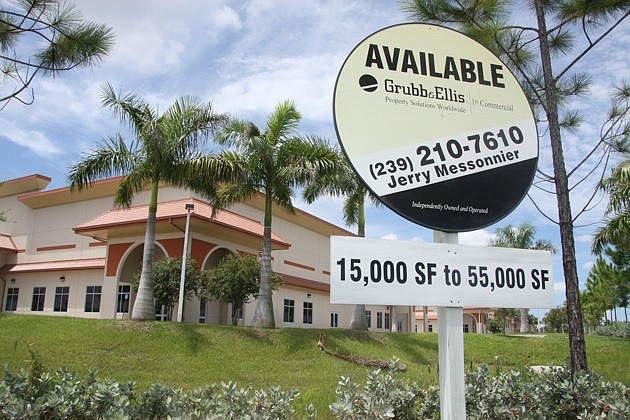- November 28, 2024
-
-
Loading

Loading

When Eastern Metal Supply bought Flesher Windows earlier this year, the company leased 60,000 square feet of space at the Airport Woods Commerce Center in Fort Myers.
The company's expansion is one tentative sign that the commercial real estate market's industrial sector may be starting to recover. Indeed, data from brokerage firms on the Gulf Coast show vacancies have started to decline in warehouses and manufacturing buildings. Net absorption, the change in occupied square feet from one period to the next, is turning positive.
For example, data from CB Richard Ellis shows 245,247 square feet of industrial space in Fort Myers has been absorbed in the first half of the year compared with the same period in 2010. In Tampa, that figure is 410,360 square feet, according to Cushman & Wakefield.
“Slowly but surely we're getting out of the doldrums,” says Rian Smith, director of global supply chain solutions with Cushman in Tampa.
To be sure, Smith and others aren't proclaiming booming business. “If we can continue the positive absorption, maybe 18 months to two years out we'll see real rent growth,” says Ross Kirk, a principal with CLW Industrial Group in Tampa.
Indeed, asking rents for industrial space in Tampa have fallen another 4% since June 2010 to $4.34 per square foot per year net of expenses, according to Cushman. In Lee County, asking rents have fallen 10% to $4.64 in the same period, according to CBRE. “The tenants are still in the driver's seat,” says Smith.
While declining in small increments, vacancy rates remain relatively high. In Hillsborough County, for example, the overall vacancy rate at the end of the first half of the year was 8.8%, or more than 7.2 million square feet of space. That's enough space to fill more than 120 football fields.
Still, there are indications that companies are starting to explore expansion opportunities on the Gulf Coast. “We're getting more inquiries, we're getting more tours,” says Smith. One positive indicator: tenants are negotiating longer lease terms, reflecting greater confidence about the future.
In the Tampa area, the larger blocks of space measuring 100,000 square feet or more are attracting the most attention. A few big deals could start to make a difference, if they happen. “It's starting with the big boys,” says Smith. “Deals that were on the backburner are now coming to fruition.”
Current deals include existing companies expanding and some outside firms considering Florida locations. “Most of the deals that I've seen have been new businesses,” says Kirk. “It means that there are people out there who feel that Tampa remains a place they'd like to do business.”
Farther south, in Fort Myers, existing companies are securing space for future growth and locking in relatively low rents, says Stan Stouder, a partner with CB Richard Ellis in Fort Myers and Naples. “There's not an influx of new tenants,” he says.
To significantly reduce the vacancy rate in Fort Myers, Stouder says residential construction has to pick up more significantly than it has so far. “Now we're building 53 homes instead of 34 a month, but that's not going absorb two-and-a-half million square feet of space,” he says.
In Tampa, construction consumes the bread-and-butter space that measures between 25,000 to 50,000 square feet. “The key to this whole thing is housing, and when that starts to click, that's when we'll know it'll come back,” says Smith.